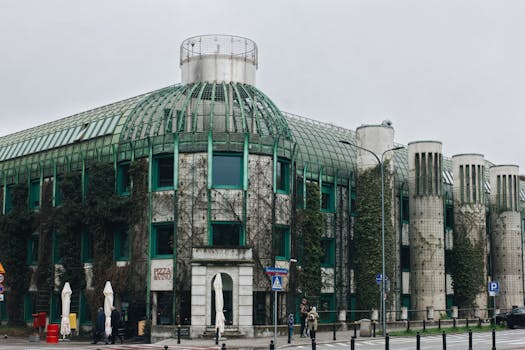
Sustainable Cities: How Europe is Shaping Eco-Friendly Lifestyles by 2025
Sustainable Cities are the future of urban development, and Europe is at the forefront of this movement. With the goal of reducing greenhouse gas emissions and creating a healthier environment for its citizens, European cities are implementing innovative solutions to shape eco-friendly lifestyles by 2025.
Introduction to Sustainable Cities
Sustainable cities are designed to minimize their impact on the environment, while providing a high quality of life for their citizens. This is achieved through a combination of green architecture, renewable energy sources, and innovative transportation systems. European cities are taking the lead in this field, with many already implementing sustainable solutions and achieving remarkable results.
European Cities Leading the Way
Cities such as Copenhagen, Stockholm, and Amsterdam are already recognized as leaders in sustainable development. These cities have implemented a range of initiatives, including bike-friendly infrastructure, green roofs, and district heating systems. For example, Copenhagen’s carbon-neutral district heating system provides heat to over 98% of the city’s buildings, reducing CO2 emissions by 80%.
Transportation and Energy
Transportation is a major contributor to greenhouse gas emissions in cities. To address this, European cities are investing in alternative modes of transportation, such as electric buses, trams, and bike-sharing systems. Additionally, cities are promoting the use of renewable energy sources, such as wind and solar power, to reduce their reliance on fossil fuels.
Green Spaces and Urban Planning
Green spaces are essential for sustainable cities, providing numerous benefits, including air purification, noise reduction, and habitats for wildlife. European cities are incorporating green spaces into their urban planning, with initiatives such as rooftop gardens, urban parks, and green corridors. For example, the city of Barcelona has implemented a green roof initiative, which has resulted in over 100,000 square meters of green roofs being created.
Waste Management and Recycling
Effective waste management and recycling are crucial for sustainable cities. European cities are implementing innovative solutions, such as waste-to-energy plants, recycling programs, and composting initiatives. For example, the city of Vienna has implemented a comprehensive waste management system, which includes a recycling rate of over 60% and a composting program that turns food waste into fertilizer.
Conclusion
In conclusion, European cities are shaping eco-friendly lifestyles by 2025 through innovative solutions and a commitment to sustainability. By investing in green architecture, renewable energy, and sustainable transportation, these cities are reducing their environmental footprint and creating a healthier environment for their citizens. As the world looks to the future, it is clear that sustainable cities will play a crucial role in shaping the world we live in.





